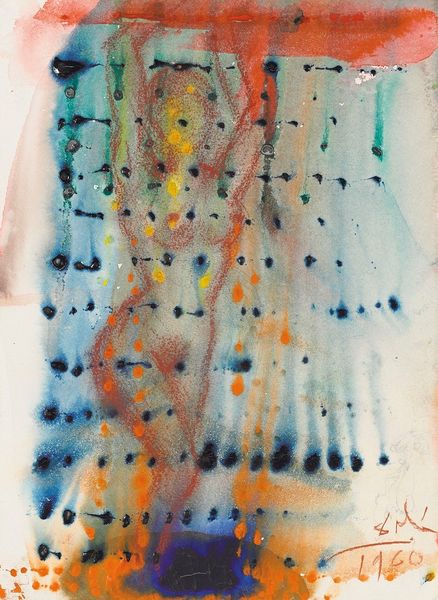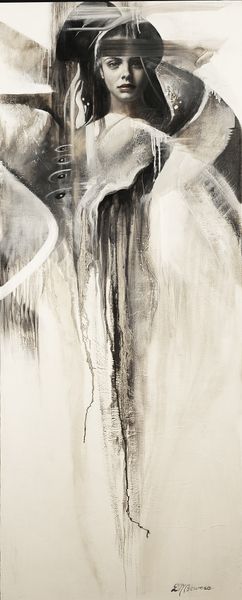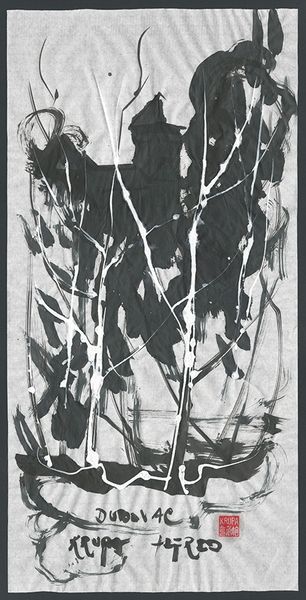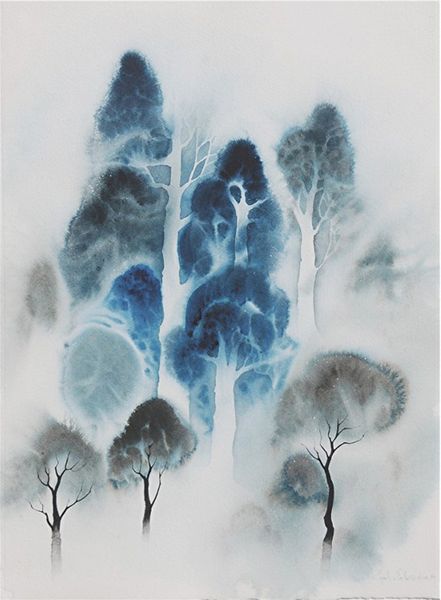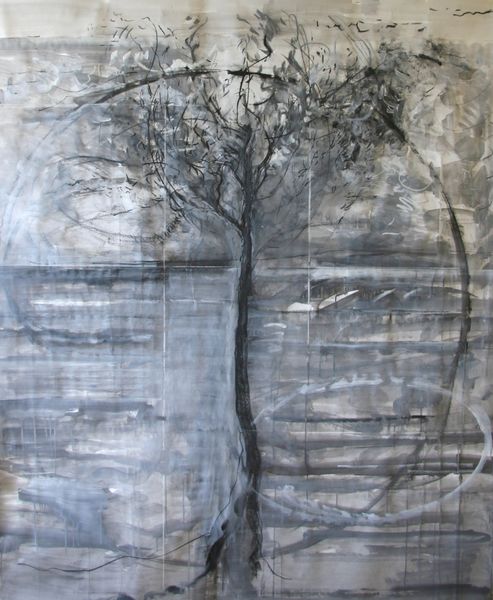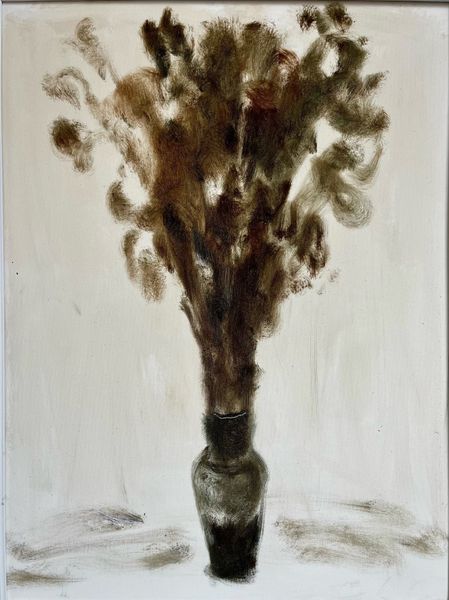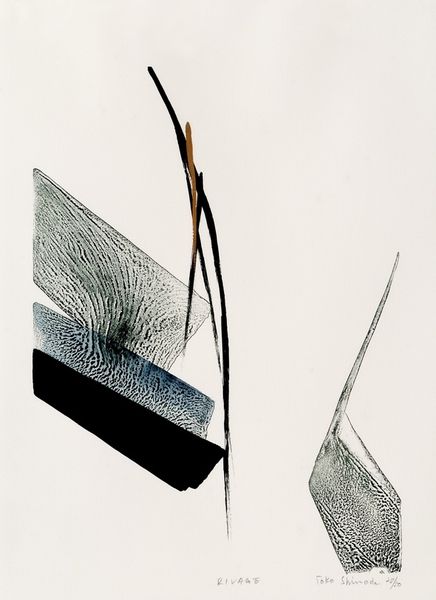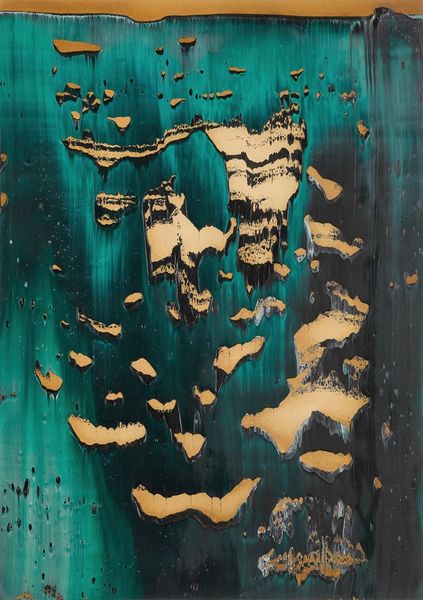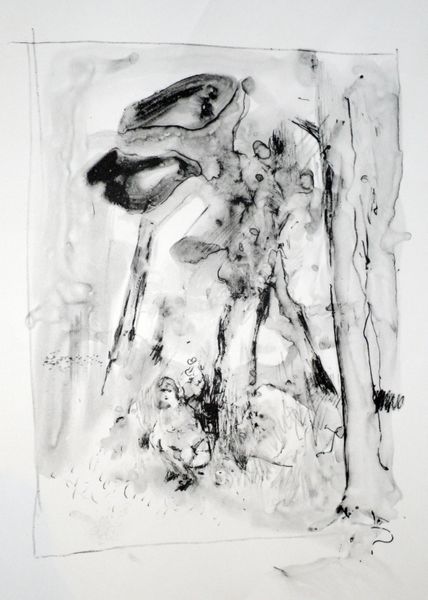
drawing, watercolor, ink
#
tree
#
drawing
#
impressionism
#
landscape
#
form
#
oil painting
#
watercolor
#
ink
#
forest
#
abstraction
#
line
#
watercolor
#
realism
Copyright: Eyvind Earle,Fair Use
Editor: This drawing is entitled "Autumn Forest." While the date is unknown, it is the work of Eyvind Earle. The image is composed with ink and watercolor washes creating these tall stark trees. It feels sparse, and a little melancholic. What do you see in this piece? Curator: It's evocative, isn’t it? For me, this piece acts as a subtle commentary on environmentalism and our relationship with nature. Consider Earle's other landscapes; he often depicts scenes of untouched wilderness, almost as a form of protest against the encroachment of industrial society. The near-absence of color and delicate washes here seem to emphasize the vulnerability of the forest, as if it’s fading or disappearing. Editor: Fading? That's interesting. So, are you suggesting that the "melancholy" I sensed could be a reflection on ecological loss? Curator: Precisely. The skeletal trees become symbols of a diminished natural world, perhaps inviting the viewer to reflect on the consequences of deforestation and climate change. The few remaining red leaves, concentrated in the upper reaches, can be seen as lingering signs of life struggling to survive. It makes you think about resilience, doesn't it? Editor: Yes, it really does! I hadn't considered that. I was so focused on the aesthetic that I missed the deeper layers. Are you also suggesting this landscape offers an emotional context, rather than just a visual experience? Curator: Exactly! It asks us to consider our place and impact within these vulnerable ecosystems. Earle's forest embodies a crucial intersectional narrative, weaving together aesthetic beauty with a critical commentary on environmental ethics and social responsibility. Editor: That connection makes the work so much richer. I see the painting in an entirely new light. Curator: It’s a powerful reminder that art often invites dialogue between our historical understanding and the urgent conversations of today.
Comments
No comments
Be the first to comment and join the conversation on the ultimate creative platform.
